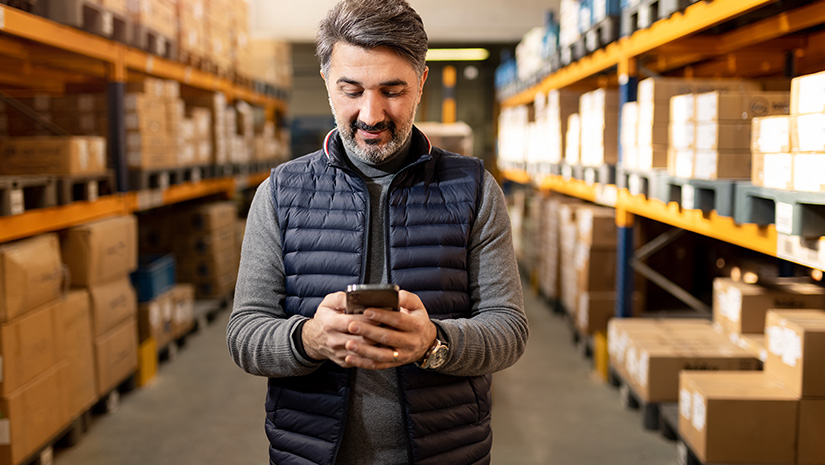
Key insights
- Adopting AI technology can help grocers closely manage inventory and improve gross margins and bottom lines.
- Real-time shelf monitoring, forecasting demand, using point-of-sale technology, and electronic shelf labeling are some of the technologies that can help meet inventory and supply chain needs.
- AI can also have a positive impact on environmental, social, and governance initiatives in the grocery and retail industry.
Develop a strategy for implementing AI in your organization.
The need for adopting new AI technology
With unprecedented inflation and issues with “shrink” (a measurement of inventory loss encompassing areas like retail theft, spoilage, breakage, etc.), the ability of a grocer to closely manage inventory has become paramount to improving gross margins and bottom lines.
Better monitoring of inventory levels, improving purchasing through forecasting, and reducing overall shrink are just some of the benefits of using artificial intelligence (AI). Having real-time, accurate data is vital to understanding current trends and if changes to your existing business operations and models may be necessary to stay competitive.
To tackle these issues, review some of the available technology that can help meet your inventory and supply chain needs.
Monitor shelves in real time
Many grocers don’t have perpetual inventory systems to provide the basic data necessary for real-time decision-making. They may be unaware they have an inventory management or shrink issue until a physical inventory is taken, which can be costly and time-consuming.
Real-time shelf monitoring gives grocers the ability to know precisely what is on the shelf at any given moment, as well as understand purchasing and selling trends while being able to predict future needs and out-of-stock items.
How does it work? Typically, small, inexpensive shelf cameras are used to automate the process of manually scanning shelves and adjusting inventory levels which allows for more timely product ordering. These monitors can even show the deterioration of produce and anticipate the shelf-life of a perishable item — which not only enhances customer experience by providing fresher products but also helps reduce food waste.
Forecast product demand
Having data is one thing, but using it to forecast demand for a product based on sales history, social media trends, the weather, and other economic and social trends can have a significant impact on maintaining ideal inventory levels and controlling shrink.
AI can monitor inventory in real-time, and can be coupled with machine learning to order products so there is just enough on the shelf to keep up with demand. Radio frequency identification and other means of product recognition can be used to physically track products through every stage of the supply chain, making ordering more predictable.
While AI can have a significant impact on in-store operations, it can also benefit the entire supply chain through things like route optimization. Route optimization can save grocers on transportation costs by using predictive traffic and weather information, making timelier deliveries, and improving efficiency.
Use point-of-sale technology to reduce shrink
Companies are also rolling out more technology at the point of sale (POS) to specifically combat shrink. For instance, computer vision equipment can display a message if a shopper neglects to scan an item at the self-checkout lane. This imaging technology is deployed throughout the store and focuses on customers prior to checkout.
Additional AI tech at the checkout lanes assists shoppers with using the correct price look-up codes for produce. This type of technology may also be used at the bagging stations of self-checkout lanes to confirm customers have scanned all their products and didn’t leave anything in their shopping carts.
Improve efficiency with electronic shelf labeling
AI technologies can be coupled with electronic shelf labeling (ESL) to help control inventory and cut down on labor costs for the mundane weekly task of updating shelf tags. ESL allows for price changes on the fly (no more of those multi-colored paper or plastic tags), which provides accurate and real-time shelf pricing. Grocers can implement promotions quickly rather than planning for more complex pricing rollouts.
ESL also helps improve labor efficiencies when compiling online shopping orders. These little shelf tags will “flash” for associates when they gather an order, helping them locate items faster. They can also be integrated into a shopper’s omnichannel experience, as smartphones can communicate with the ESLs for digital coupons.
Environmental, social, and governance initiatives
Social governance is a hot topic among grocers as environmental, social, and governance (ESG) initiatives become increasingly important to financial results for investors and the public.
In the grocery and retail industry, AI can be used to analyze supply chain data and identify areas where there may be risks related to human rights violations or environmental damage. It can also analyze data on energy usage and help identify where energy can be conserved, or improve transportation routes to reduce emissions.
How we can help
Using AI within your operation can help reduce shrink and mitigate other enterprise risks. CLA can work with you to develop a strategy for selecting AI technology that aligns with your business goals and objectives. Our digital professionals can also provide project management and training for employees, and can help analyze data to identify trends and insights that can inform business decisions.
